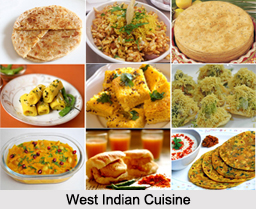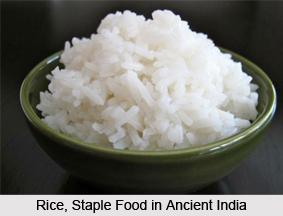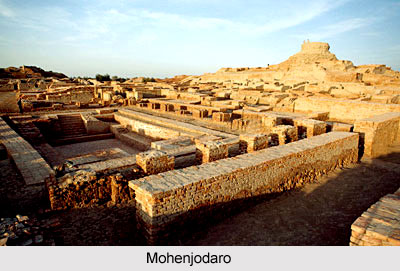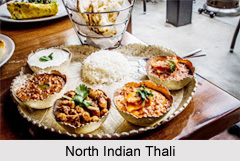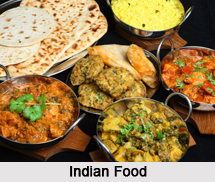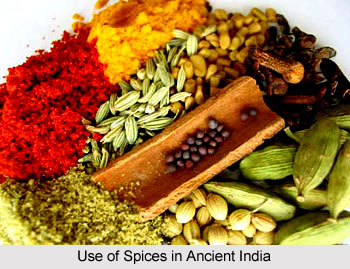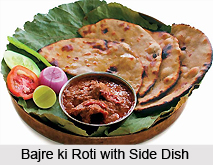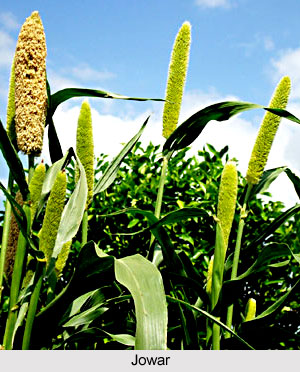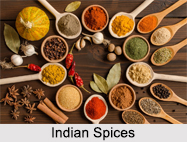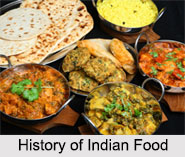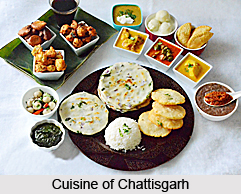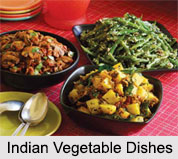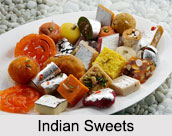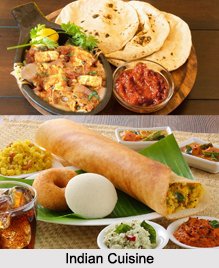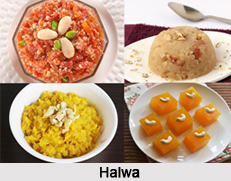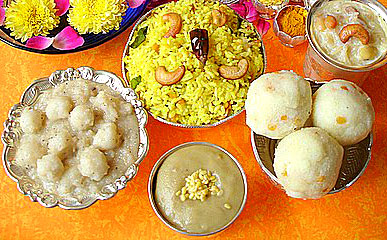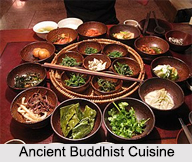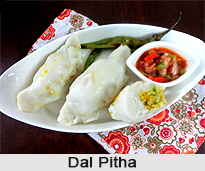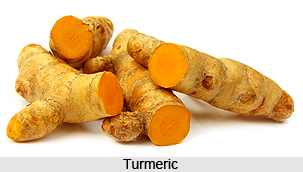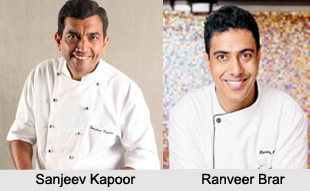Chole Bhatura is an all time favourite Punjabi dish. It is liked almost all over in India and even abroad. Chola Bhatura is a spicy, tasty and a heavy dish. "Chola" stands for a spicy curry made with white chickpeas and "Bhatura" is deep fried flour puris. It is a heavy breakfast which is generally accompanied with lassi. Chola Bhatura can be eaten in breakfast as well as in lunch. This dish is served with onions, lemon wedges, green chillies, carrot pickle and green chutney.
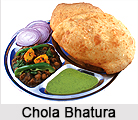
Variations of Chola Bhatura
There are different varieties of bhatura available such as "Aloo Bhatura" (bhatura filled with boiled potato), "Paneer Bhatura" (bhatura filled with cottage cheese) etc. On the other hand the usual accompaniment is a relatively dry preparation called "Pindi Chana".
Ingredients:
For the Chola
•1 cup Chickpeas, soaked overnight
•1 Tea bag
•1/2 tsp Cumin seeds
•1 Onion, finely chopped
•Half inch piece of Ginger, grated
•2 cloves of Garlic, grated
•2 Green Chillies, chopped
•2 medium Tomatoes, chopped
•2 tsp Chola Masala
•2 tsp Chilli Powder
•2 tsp Dried Mango Powder
•1/4 tsp Turmeric Powder
•1 tbsp Coriander Powder
•1 tsp Cumin Powder
•2 tbsp Oil
•Salt to taste
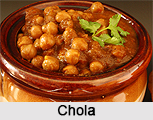 For the Bhatura
For the Bhatura
•1 cup Flour
•1/2 cup Suji
•1/4 cup Curd
•1/4 tsp Baking Soda
•1/4 tsp Sugar
•1/2 tsp Oil
•Salt to taste
•Water to make dough
•Oil for deep-frying
For Serving
•1 Onion, sliced
•4 Lemon wedges
•4 Green chillies, chopped
Method:
For the Chola
1. Pressure cook the chickpeas with the tea bag for 3 whistles until they are soft. Drain and keep aside. Discard the tea bag.
2. Heat oil in a pan and add the cumin seeds. When the seeds crackle, add the onion, green chillies, tomatoes, ginger and garlic and sauté till the onion is golden brown.
3. Add the Chola masala, chilli powder, amchur, turmeric powder, coriander powder, cumin seed powder and salt and sauté for another minute.
4. Add the chickpeas and 1 cup of water and mix well. Simmer for 10 to 15 minutes. Keep aside.
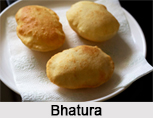 For the Bhatura
For the Bhatura
1. Soak suji in 1/2 cup water for 15 - 20 minutes to make it soft.
2. Combine the flour, soaked suji, curd, baking soda, oil, sugar and salt and knead into soft dough with using little water.
3. Knead the dough very well till it is smooth.
4. Now take a fresh bowl and transfer the dough in it and apply a thin layer of refined oil on the dough. Cover the bowl with a cling sheet and keep it aside for fermentation for 2 - 3 hrs in a warm place. Once it is ready it will be double in size.
5. Now remove the cling sheet and press the dough in the center to remove all the excess air and knead again.
6. Divide the dough into equal parts and roll out into circles of 5 inch diameter.
7. Deep fry in hot oil till the bhaturas puff up and both sides are golden brown.
8. Serve hot with the chola, sliced onion, green chillies and lemon wedges. Along with carrot pickle and green chutney.
Tips: While frying the bhatura, press the centre lightly with a frying spoon so as to help it to puff up. Heat the oil well so that bhaturas do not absorb extra oil and they fluff well.
